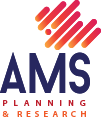Case Study: Business Planning & Strategy
Miami Marine Stadium
Location: Miami, FL | AMS Team: Steven Wolff, Nora Fleury, and Meg Friedman
For 30 years the Miami Marine Stadium served as a venue for watersports and headliner concerts and entertainment events. Damage caused by Hurricane Andrew forced the City of Miami to declare the structure unsafe, and it was abandoned in 1992. In 2008, Friends of Miami Marine Stadium formed to reactivate the venue and from 2016–2021 the grounds and water basin hosted the Miami International Boat Show. In the midst of reactivation, the City leadership chose to approve bond financing to support a renovation – turning the venue back into an entertainment destination. But what would the operating model look like?
The Challenge
The City of Miami engaged AMS to craft a business case for operating the venue for live, high-quality concerts – touring and locally produced.
Miami Marine Stadium
Location: Miami, FL | AMS Team: Steven Wolff, Nora Fleury, and Meg Friedman
For 30 years the Miami Marine Stadium served as a venue for watersports and headliner concerts and entertainment events. Damage caused by Hurricane Andrew forced the City of Miami to declare the structure unsafe, and it was abandoned in 1992. In 2008, Friends of Miami Marine Stadium formed to reactivate the venue and from 2016–2021 the grounds and water basin hosted the Miami International Boat Show. In the midst of reactivation, the City leadership chose to approve bond financing to support a renovation – turning the venue back into an entertainment destination. But what would the operating model look like?
The Challenge
The City of Miami engaged AMS to craft a business case for operating the venue for live, high-quality concerts – touring and locally produced.
Our Approach
AMS conducted a background review of existing studies and reports, then led an exploration of the marketplace, inventorying competitive venues for live music. We paired this with best practice research to develop a menu of potential partnerships and operating requirements, reflected in a a 10-year operating pro-forma and dynamic model for City staff to manipulate as the project progresses.
Define the opportunity
0
deep-dive case studies to understand the operations of “destination” amphitheaters
0
types of case, exploring global, national, and local destination venues
0
significant competitive venues identified in the market, each with distinguishing limitations and advantages
0
seat capacity venue identified as a gap in the market, based on in-depth review of the programming and operational structure of regional competitors
0
deep-dive case studies to understand the operations of “destination” amphitheaters
0
types of case, exploring global, national, and local destination venues
0
significant competitive venues identified in the market, each with distinguishing limitations and advantages
0
seat capacity venue identified as a gap in the market, based on in-depth review of the programming and operational structure of regional competitors
Define the operating model
- 4 unique event profiles developed for modeling, ranging from free community events to major headliners
- 10-year dynamic pro forma model developed, using data from over 50 relevant venues in the US
- The model demonstrated a net-positive base year (Year 3 after opening) of operations, with promoter rentals and attendance as the major drivers of earned income
Define the operating model
- 4 unique event profiles developed for modeling, ranging from free community events to major headliners
- 10-year dynamic pro forma model developed, using data from over 50 relevant venues in the US
- The model demonstrated a net-positive base year (Year 3 after opening) of operations, with promoter rentals and attendance as the major drivers of earned income

I’m very excited by these results. This could be a significant plus for the city. This is such a significant structure in some way to many in the community. We have suffered so much loss of identity in this community. So many historic structures have fallen by the wayside. It would be an honor to resurrect this one.”
– Damian Pardo
Commissioner, City of Miami, as quoted in the Miami Herald
Our Solution
AMS worked with City staff to ensure strong alignment with City of Miami priorities related to tourism and economic development.
We assembled a team that included seasoned experts in commercial promoting and the operations of destination amphitheaters, accessing robust, contemporary information on artist fees and promoter payment models.
We facilitated multiple workshops with City staff and project leadership to describe and detail a governance structure that would maximize access to philanthropy, while honoring City dictates regarding the historic importance of the Miami Marine Stadium and its unique placement on the waterfront.
AMS worked with City staff to ensure strong alignment with City of Miami priorities related to tourism and economic development.
We assembled a team that included seasoned experts in commercial promoting and the operations of destination amphitheaters, accessing robust, contemporary information on artist fees and promoter payment models.
We facilitated multiple workshops with City staff and project leadership to describe and detail a governance structure that would maximize access to philanthropy, while honoring City dictates regarding the historic importance of the Miami Marine Stadium and its unique placement on the waterfront.
Reactivating historic venues is a complex endeavor – and finding a way to do so that is economically and aesthetically feasible requires deep knowledge and delicate balancing. Contact AMS today to talk about how we can partner with you to define the opportunity and create a path forward for your community.
Contact AMS today to talk about how we can co-design a process that delivers a plan – and a meaningful experience for every stakeholder involved in making it.
© Copyright 2025 by AMS Planning & Research


